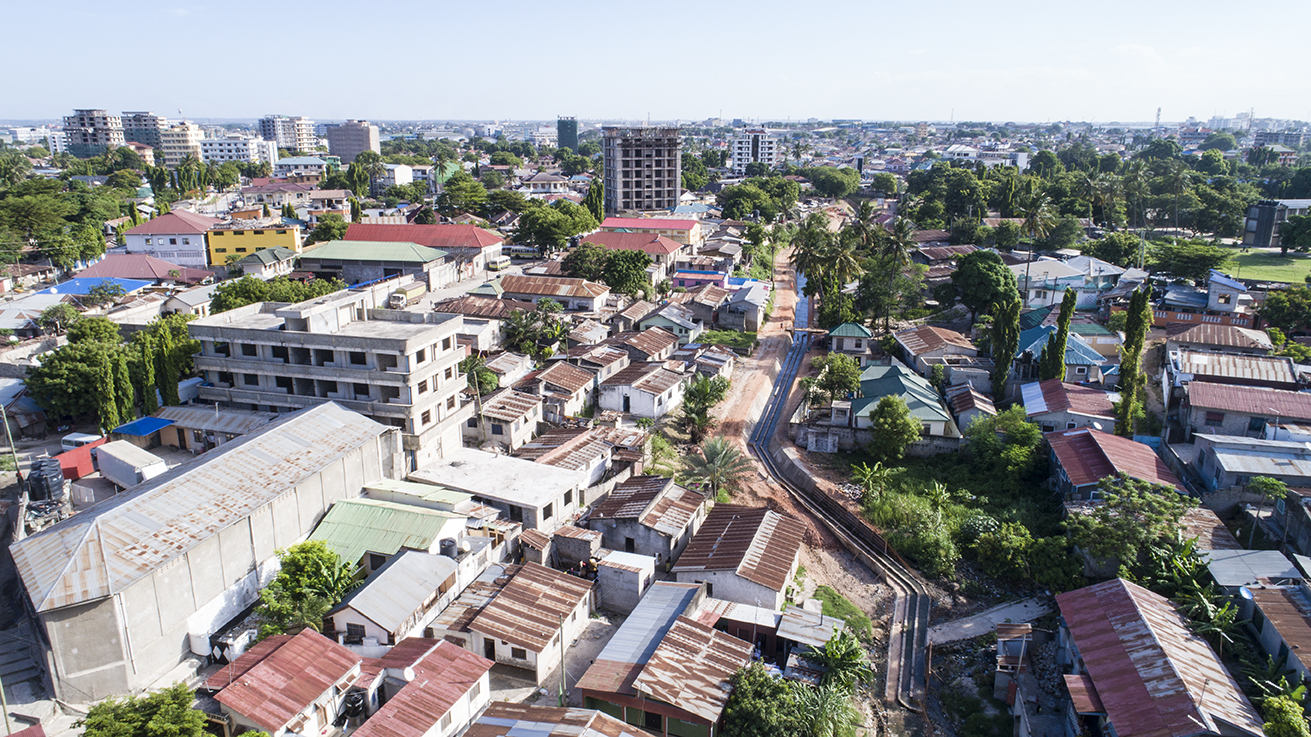The United Nations Office for Project Services (UNOPS)
Increasing access to safe water for urban areas in Africa

As the population of cities and urban areas in Africa is set to explode in the coming decades, how can we ensure an adequate supply of water for city dwellers?
By 2050, the World Economic Forum predicts that more than 1.3 billion people in Africa will call a city home. Such a large number of people living in growing cities could pose problems, so we asked our experts: What are the top three types of infrastructure to focus on for the sustainable development of cities and urban areas in Africa?
Many cities and urban areas in Africa struggle to ensure an adequate water supply for current residents. And large differences exist between countries. In Liberia, for example, urban access to safely managed piped water is around 9 per cent – in South Africa, it's 99 per cent.
Even within cities, there are disparities when it comes to access to water. In Accra, Ghana access to piped water as well as waste disposal and toilet facilities decreases as the distance from the city centre increases.
Water is life. It's vital for everything that we do – which means that difficulty accessing adequate water supplies has a cost that is paid across all levels of society.
It impacts women and girls, who are more likely to be the ones fetching and carrying water as well as doing household chores that require water, such as washing clothes – leaving less time for other activities like education and jobs.
It impacts business owners who need water to keep their businesses going, affecting their livelihoods. It impacts the environment as people get water that's safe to drink the only way they can – through bottled water, adding to the global mountain of plastic waste.
And it impacts health, placing more pressure on doctors and nurses treating waterborne diseases and associated health issues that could be prevented with access to clean water.
Rapid population growth – especially in urban informal settlements – puts pressure on already struggling water resources and infrastructure. Erratic rainfall patterns make it hard to predict just how much water will be available.
So how can we overcome these challenges – and encourage a more efficient, sustainable supply of safe water and help ensure universal access to it?
For one thing, the potential for public-private partnerships remains untapped. Strong government institutions, policies, laws and clear processes for overseeing and regulating the provision of services – such as water – will ensure better planning and management. This can help governments attract private sector investment for infrastructure projects related to these services and encourage innovation.
The public sector could utilize the private sector's investment in innovation, research and development by allowing it to build and more efficiently operate water infrastructure. After a pre-determined amount of time – during which the private sector partner receives their initial investment back (as well as some profit) by providing water services – ownership of the infrastructure could then be transferred to a public entity.
Using a management and operating contract, the private sector company would continue to operate the water utility, with employees from both the public and private sectors. This would be a good way to transfer knowledge on efficiently providing water services and training on the latest technology from the private sector to the public sector.
The end result? More of the public has access to safe water at a reasonable price.


For another thing, we have to get creative in solving water supply issues in urban areas. And especially in informal settlements, we have to think small. Small-scale solar desalination modules have previously been tested in smaller, coastal communities to provide much-needed water. Why not also try to utilize these in informal urban settlements in coastal areas, where space is at a premium and demand for safe water is high?
And of course, fully utilizing innovation is also vital. Smart technology, for example, could be used to detect water leaks while ensuring customers pay for exactly the amount of water they consume each month. This could also be used to gather data on water usage to identify which areas are receiving sufficient amounts of water – and which areas are coming up short. That data could then be used by the government to better plan water infrastructure in the long term.
As the populations of cities and urban areas across Africa continue to grow rapidly over the coming decades, the need for sufficient, safe water resources will only intensify. Ensuring an adequate water supply will be vital for development – both now and in the future.
This article is the first of a three-part series examining the top three development projects to focus on in African cities and urban areas. You can read the second article in the series here.
Joseph Nyaga and Phostine Wekesa
Joseph Nyaga is a Civil Engineer with UNOPS in Kenya, where he supports infrastructure projects aimed at improving public health and combatting water scarcity, climate change and water-related hazards. He has experience working on and managing civil engineering projects in Africa.
Phostine Wekesa is an Associate Civil Structural Engineer with UNOPS in Kenya. With a strong interest in water and sanitation, she has experience designing structural engineering projects in Cameroon, the Central African Republic, Mozambique, Somalia, South Sudan, Tanzania, Uganda and Zanzibar.













